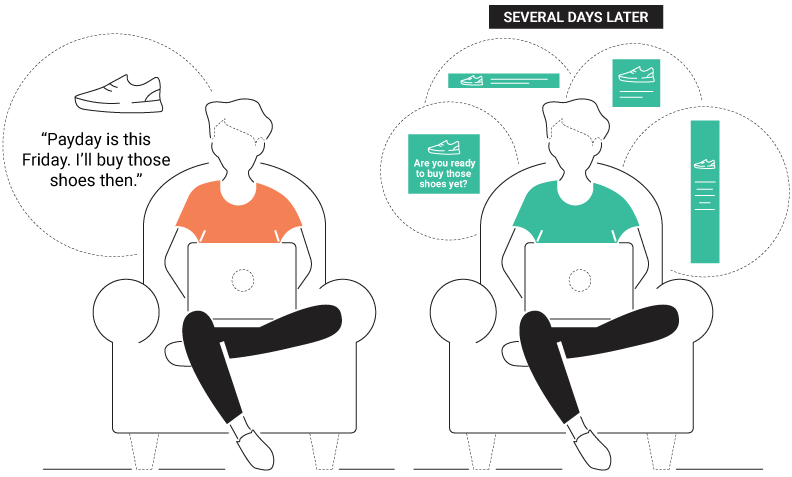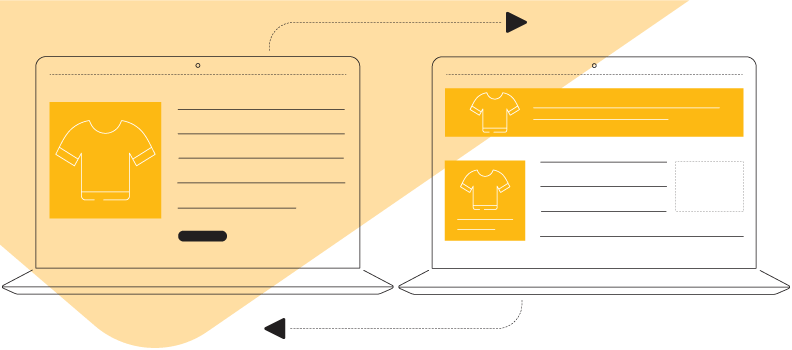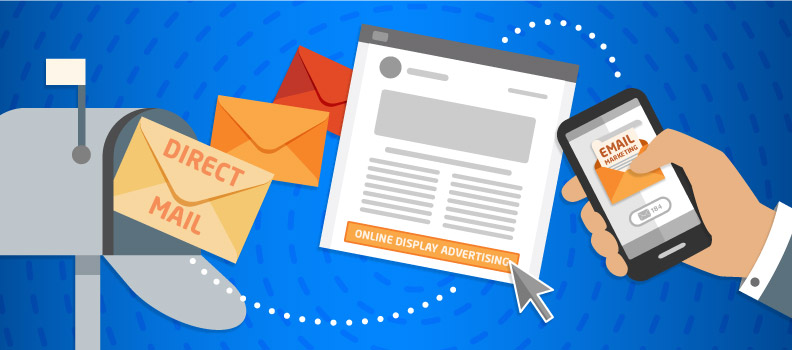
Lindsey Cluck is a multi-channel marketing specialist at Data Axle USA.
Remarketing display ads are everywhere. They are image ads that follow you around the internet. And businesses have good reason to use them when trying to connect with existing customers as well as new prospects.
Consider that that 97% of people visiting your site the first time won’t purchase anything at all.
That’s because before they’ll put their faith (and their money) into your product or service, they want to get to know you. Can they trust you? Do other people like your product or service?
You see, not all of your prospects are jumping ship without purchasing because they’re disinterested. Rather, they could have gotten distracted. Or they could be deciding whether or not they want to spend the money. Maybe they’re researching some competitors.
Whatever, the reason, a remarketing ad exists to out you back at the forefront of a prospect’s mind.
A remarketing ad done well is poised to bring back prospects who visited your site but didn’t purchase. Ultimately, this will help improve not only your online marketing plans, but it can also grow your bottom line.
Remarketing or Retargeting?
One thing that happens often in the world of marketing is that terms get used interchangeably even when they mean different things. This is the case with “retargeting” versus “remarketing.”
The biggest difference between these worlds comes down to strategy. While retargeting has to do with what ads reach what audience member, remarketing uses information collected from users to send sales emails.
What remarketing can look like
Let’s walk through a typical scenario for remarketing display ads.

One day, you find a great pair of shoes online. You visit the company’s website and click around. You think to yourself: “Payday is this Friday. I’ll buy those shoes then.” So, you leave the website without buying the shoes. Now, several days pass, and multiple times each day you see that exact pair of shoes on completely unrelated websites. Why is this happening?
It has to do with cookies. Yes, cookies. I’m not talking about chocolate chip or snickerdoodle. These are internet cookies, and they allow businesses to show you ads after visiting their website. To some people, these ads are a little creepy. Other people find these ads helpful. They are based on your browsing history, which makes them highly relevant to your interests.
The ads are asking: “Are you ready to buy those shoes yet?” Timing is critical for marketing, so it pays to increase your reach. Remarketing display ads bring huge value to your overall marketing efforts with lots of ad views, or impressions, for a relatively low price.
In fact, people who are served remarketing display ads are 70% more likely to covert than website visitors who have not seen remarketing ads.
If you want to start serving remarketing ads to your target audience, you need these two things before anything else:
1) A piece of tracking code, called a remarketing pixel, is placed on your website. This code places the internet cookie when people visit.
2) A sizeable pool of prospects with your website’s cookie. There’s no set number. However, 1,000 website visitors per month is a good starting point. However, if you don’t have at least 1,000 visitors, we still have remarketing solutions for you.
The cost of remarketing
Many marketers have shied away from paid advertising due to the cost. Instead, they prefer more traditionally “free” routes of connecting with prospects including email marketing or blogging.
However, adding one or several paid channels to your overall marketing plan has big benefits—even if you don’t have a big budget. In fact, remarketing ads are among the most cost-efficient ads you can run.
In 2018, an analysis by AdStage showed that 1,000 viewers cost businesses as little as $2.28.
Add to that, the fact that the average click-through rate on retargeted ads is around 0.7% (and nearly 70% likely to convert) and you have yourself a highly desirable marketing channel.
The Three Steps of Retargeting
When you’re first getting started in retargeting, you can feel overwhelmed with where to begin. As long as you complete the below three steps, you’re sure to be on the right path.

1. Select the Right Audience
When you’re preparing to send an ad campaign, it’s important to ensure that your ad is reaching the right prospects. It may seem simple, but you’d be surprised how many people in southern California have been delivered retargeting ads for snow boots!
Utilize your audience segments to deliver a highly targeted message to a small group of people. This way you’re creating copy, graphics, and an overall message that appeals to the individuals as opposed to the masses which is what will help you sell more.

2. Simplify Your Message
Character counts on your ads exist for a reason. Do what you can to create the most unique, powerful message using the smallest amount of space. By keeping your headline short and sharp and the body of your copy as a one-lined elevator pitch, you enhance the likelihood that your target audience will purchase from you.

3. Track and Analyze
It can be tempting to write off a poor-performing retargeting ad and never try this avenue again—but that would be a mistake. Like anything in marketing, finding a formula that works for your business won’t always be cookie-cutter.
In order to better determine what your audience responds to (and what gets a less than desired result) it’s important to track your retargeting ads. In doing so you can maximize your budget, lower your costs, and reach more prospects.






